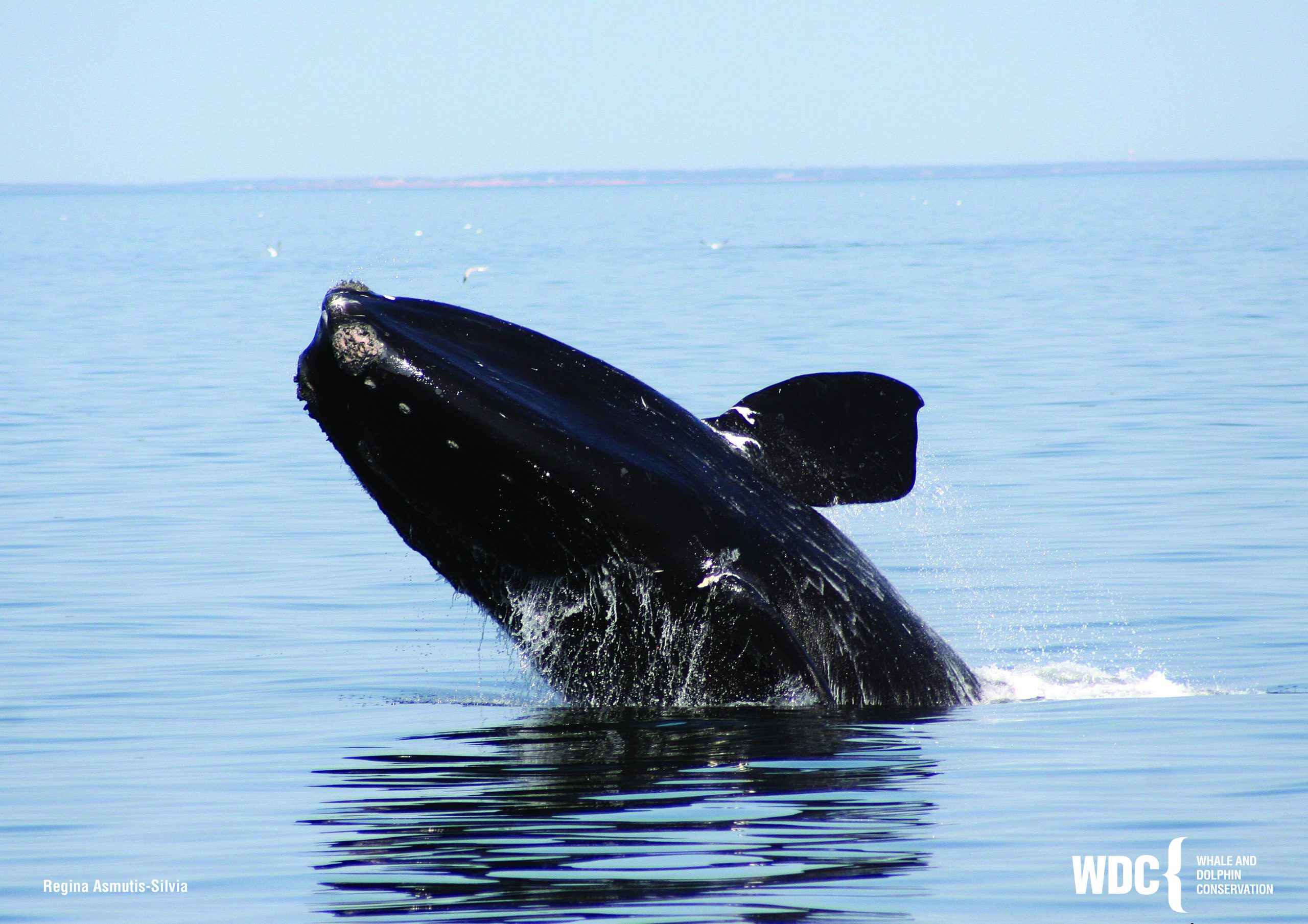Imagine that you’re sailing along the east coast. You glance around at the ocean and see… Nothing. Nothing hints that the ocean around you is teeming with life. But if you are lucky and looking carefully, you might spot a swirl moving through the water, signaling that a North Atlantic right whale is swimming right below the surface.
If you are extremely lucky, you might see this slow-swimming whale defy gravity and leap out of the water, landing back down with a huge splash. As a fraction of its 50-foot length is exposed, you might see the scars that show the entanglements and strikes it has suffered but survived. The ones that don’t survive these clashes with humans sink to the bottom of the ocean.
Left whale, right whale
North Atlantic right whales are one of our native whale species in the US Atlantic. They can travel vast distances, most live off the eastern US and Canada, but they have occasionally been found off the shores of Norway, the UK, and Spain. We don’t know much about their daily lives, they are normally found alone or with a calf, but we believe that they chat to other whales over great distances. What we do know is that they are constantly dodging threats scattered about the ocean.
They used to be widespread before whaling and hunting reduced their numbers to a critical level. Today, there are fewer than 340 Right whales in the world. The main threats to their survival are accidental entanglements in fishing gear and vessel strikes. As they live in busy coastal waters, they are constantly at risk of getting entangled in active buoy lines, or fatally hit by a boat as they swim close to the surface.
Gardeners of the ocean
You might not know this, but whales fight climate change every single day. How do they do it? It’s not glamorous, but their poop fertilizes phytoplankton at the surface. This microscopic phytoplankton absorbs carbon from the atmosphere and produces oxygen. A lot of oxygen. In fact, half of the oxygen on earth is produced by phytoplankton.
That’s why Whale and Dolphin Conservation (WDC) works so hard to protect these gentle giants. As well as being beautiful and impressive animals, they are essential for our survival on this planet.
Whale and Dolphin Conservation
It is WDC’s mission to protect whales and dolphins to create a sustainable future for marine mammals – and humans. They work on a huge scale, focusing on research, policy work, conservation projects, and education to impact the species as a whole.
“We know it can take a long time to see the results, but we won’t give up until we do. When we do secure results, they make a big splash.” says Regina Asmutis-Silvia, Executive Director for WDC North America. “On the east coast, WDC has already reduced the risk of entanglements by providing fishermen with alternatives to static vertical buoy lines. And we are working to secure areas for speed limit for vessels along the east coast when they transit through critically endangered North Atlantic right whale habitats. That means even if a whale is tragically hit, they’re much more likely to recover and swim another day and boaters are less likely to damage their vessels or injure their passengers.”
How can we help?
As part of LEX’s commitment to donating 1% to endangered species every month, we’re delighted to be supporting WDC. Our donation will support their long-term policy work, aiming to expand the speed limit further along the east coast. They also want to create new critical habitats to reflect the current spread of right whales due to global warming.
If you’re passionate about our right whales, here are a few ways you can help. You can pledge your support, and be the first to see new updates and campaigns. You could also adopt a whale to symbolically show your support and protect these species. And you can become a member to keep afloat of all the latest news and pledge your ongoing commitment to our ocean mammals.
It is thanks to our clients, supporters, and passionate team that we can donate every month. Thank you for choosing LEX and caring about endangered species.



